
views
Addressing the President in Person

Rise when the president enters the room. All seated persons will be expected to rise when the president enters the room, as a sign of respect. The president will then indicate when those who have risen may return to their seats.

Address the president as “Mr. President” or “Madam President.” Should you have the opportunity to speak directly with the president, do not call them by their first or last name. The title of “Mr.” or “Madam” will show your respect for the office while you carry on a conversation with the president.

Introduce a third party to the president. Use the phrase “Mr./Madam President, may I present.” In the United States, the president should not be introduced to someone, as this would seem disrespectful. Always introduce the third person to the president. For example, be sure to say, “Mr./Madam President, may I present my son Billy.” Do not say, “Billy, I want you to meet the president.”

Announce the president using his or her title. If you are given an opportunity to announce the president—for example, before they deliver a speech—announce the president to onlookers as “the president of the United States.” So, if you’re announcing the current president, you could say: “Let me announce the president of the United States, Joe Biden."
Sending a Letter to the President
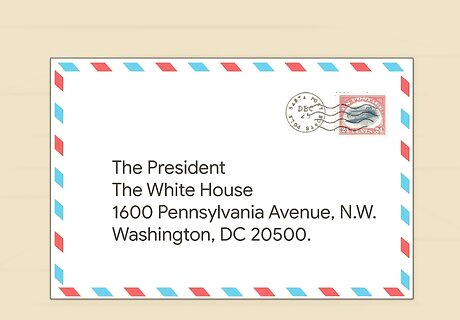
Address the envelope to “The President.” In written correspondence, the president’s first and last names should never appear. The address should read: The President The White House 1600 Pennsylvania Avenue, N.W. Washington, DC 20500.
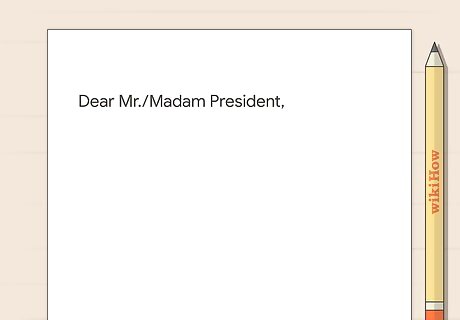
Begin your letter: “Dear Mr./Madam President.” This is the polite and expected salutation with which all written addresses to the president should begin. Do not use the president’s name in your correspondence. Continue to refer to them as Mr. or Madam President.
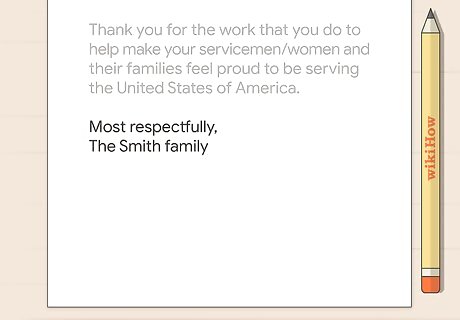
Conclude your letter, “Most respectfully.” This complimentary close will indicate that the body of your letter has concluded. You can write thank you if you request something in the letter. Sign and print your name at the end of the letter.
Addressing a Former President
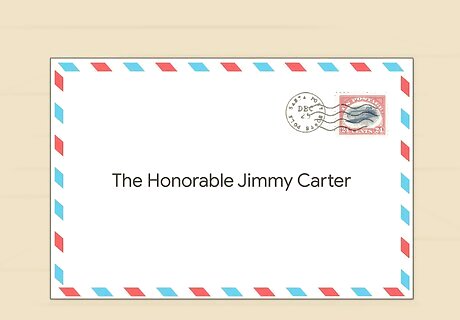
Make your envelope out to “The Honorable” former president. Former presidents do not keep the title of “president” once they leave office (contrary to how they’re often referred to in the media). If you’re writing a letter to a former president, the envelope should be addressed to: “The Honorable [first and last name].” For example, you could address a letter to “The Honorable Jimmy Carter” or “The Honorable George Bush.”
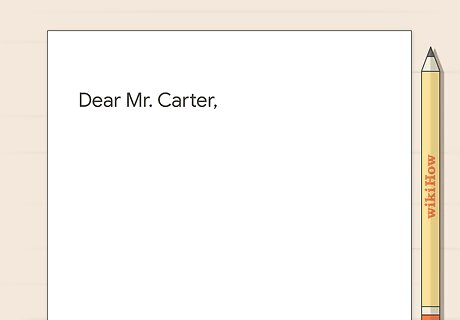
Address written correspondence to “Dear Mr” and their surname. A letter to a former president is slightly less formal than correspondence to a sitting president since the recipient no longer holds the office of president. Do not use the term “honorable” in the introduction or body of your correspondence—“honorable” should be used on the envelope only. So, your letter would begin: “Dear Mr. Carter” or “Dear Mr. Bush.”

Address a former president as “Mr.” and their surname in person. An in-person address will also be less formal for a former president than it would for a sitting president. For example, you would address Barack Obama as “Mr. Obama,” not as “Mr. President.” The rules about introductions are similarly less formal. As a general sign of respect, though, it’s still probably best to introduce a third party to the former president.


















Comments
0 comment